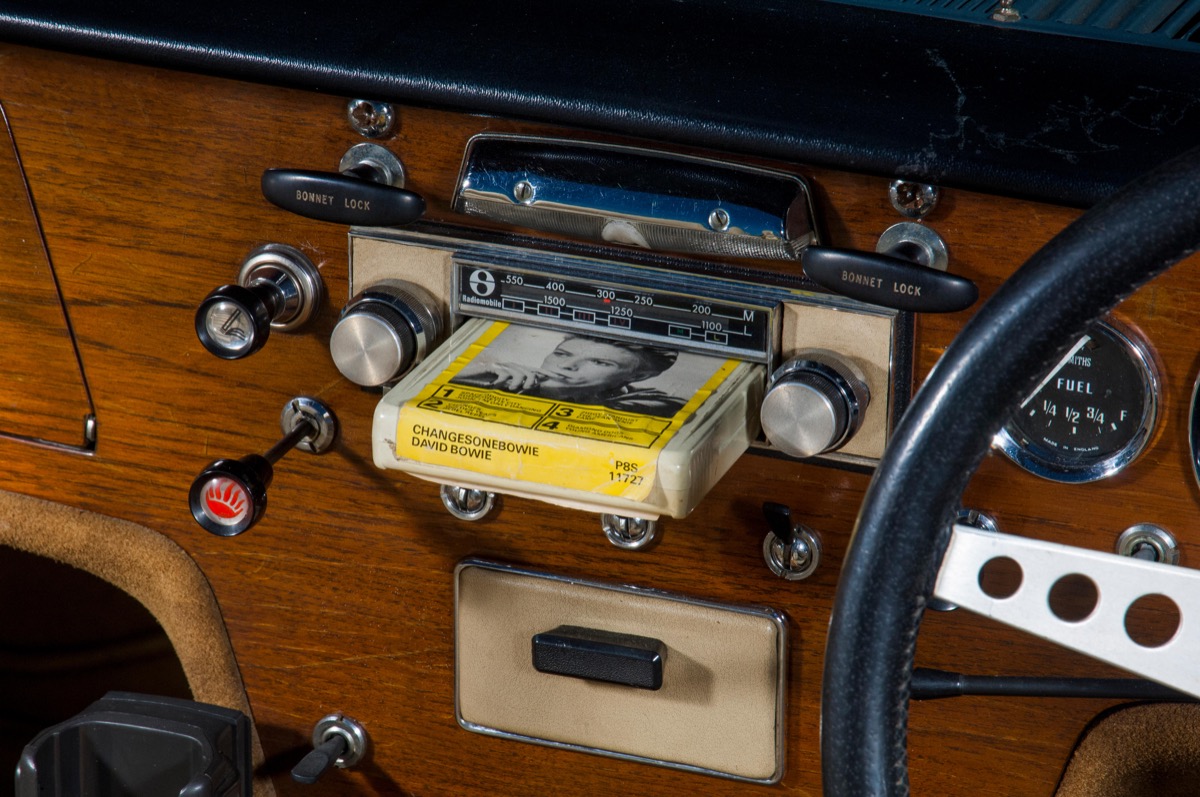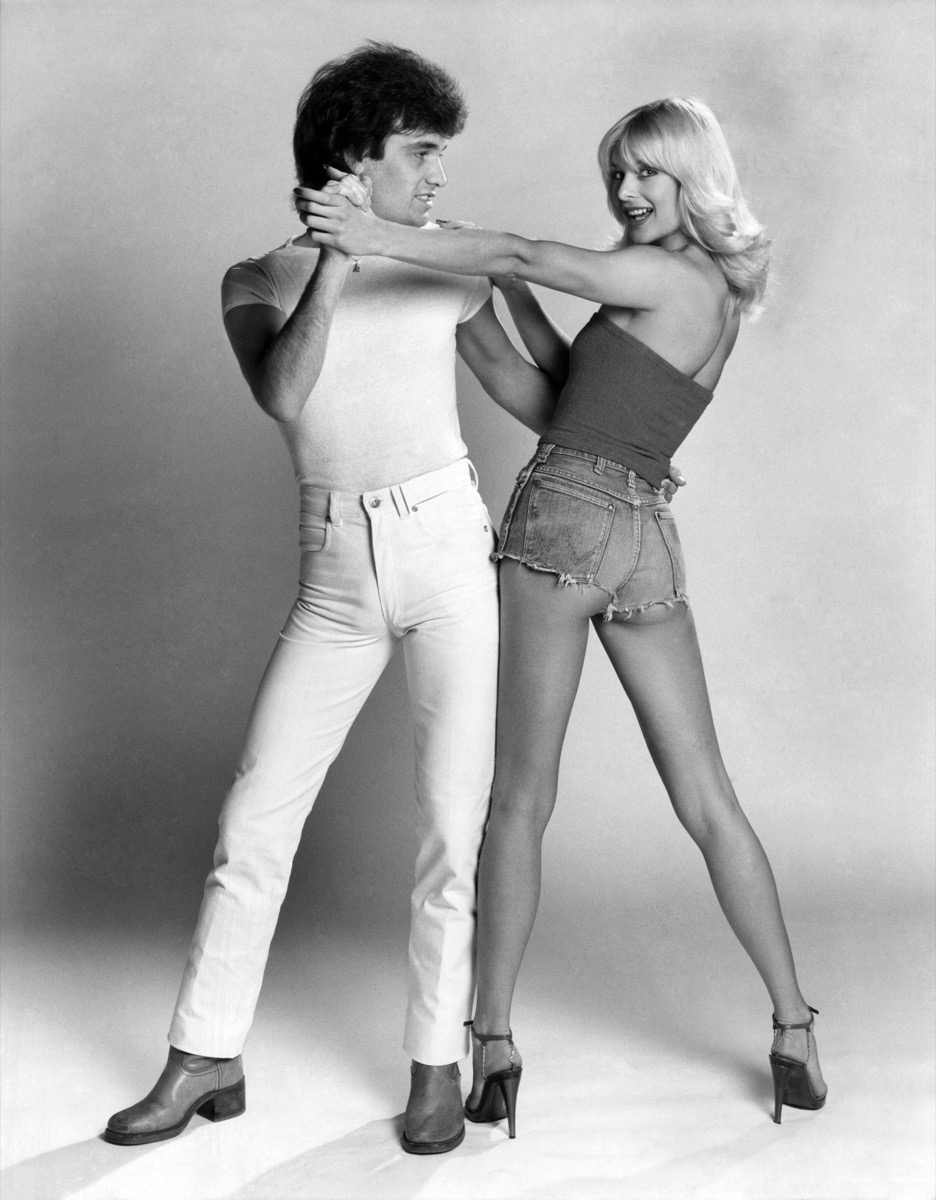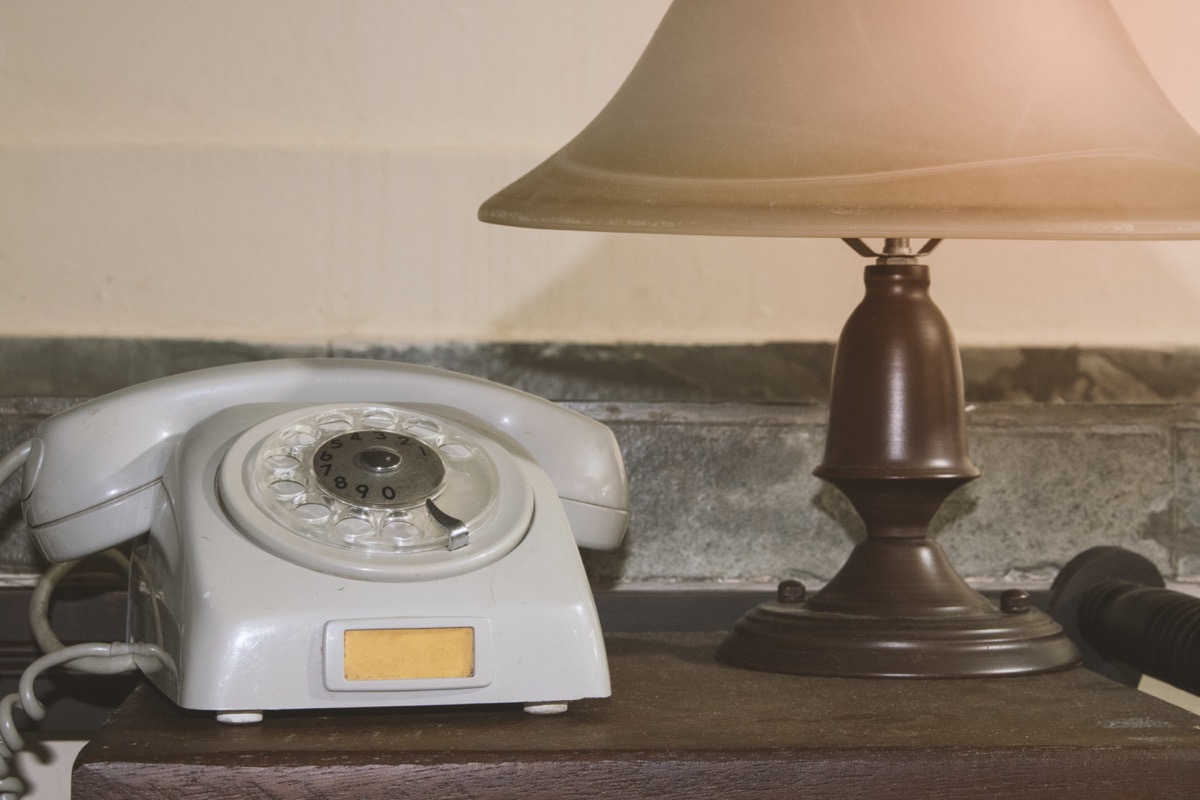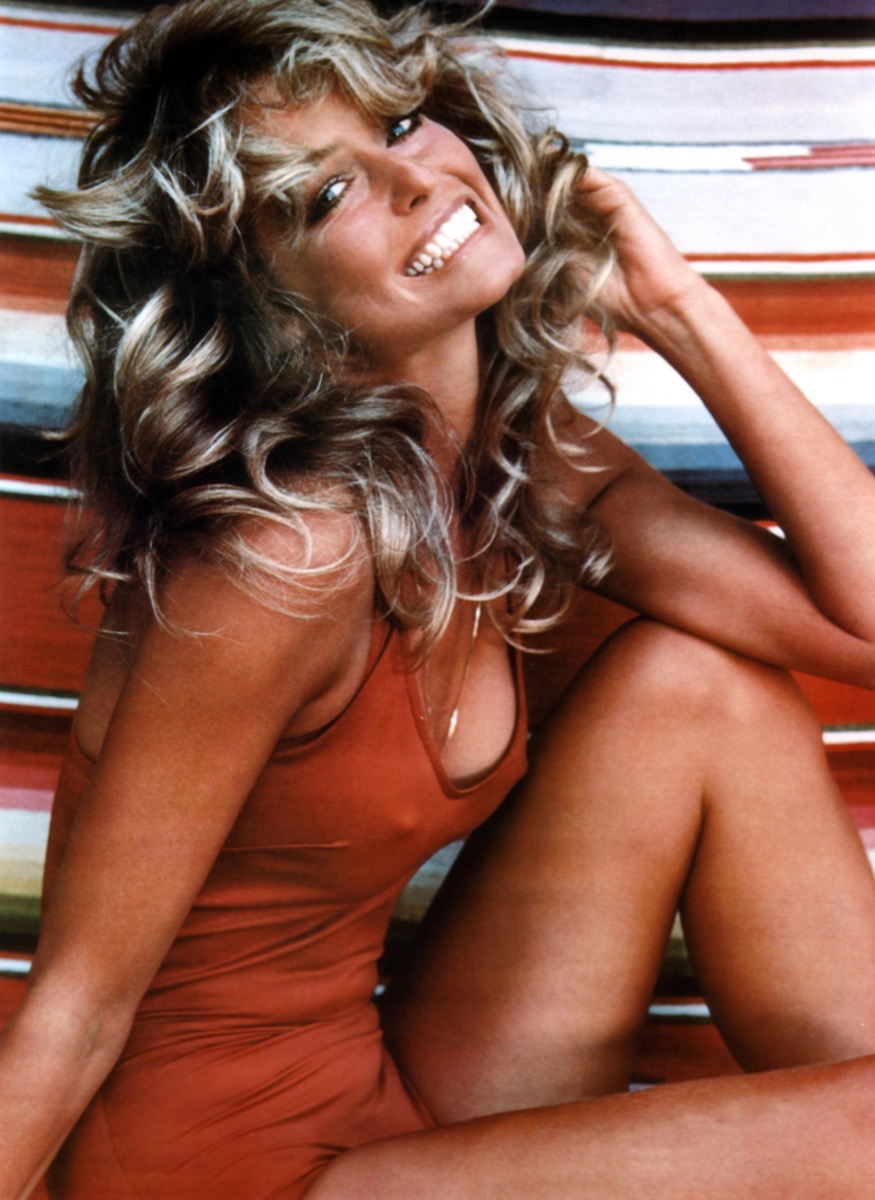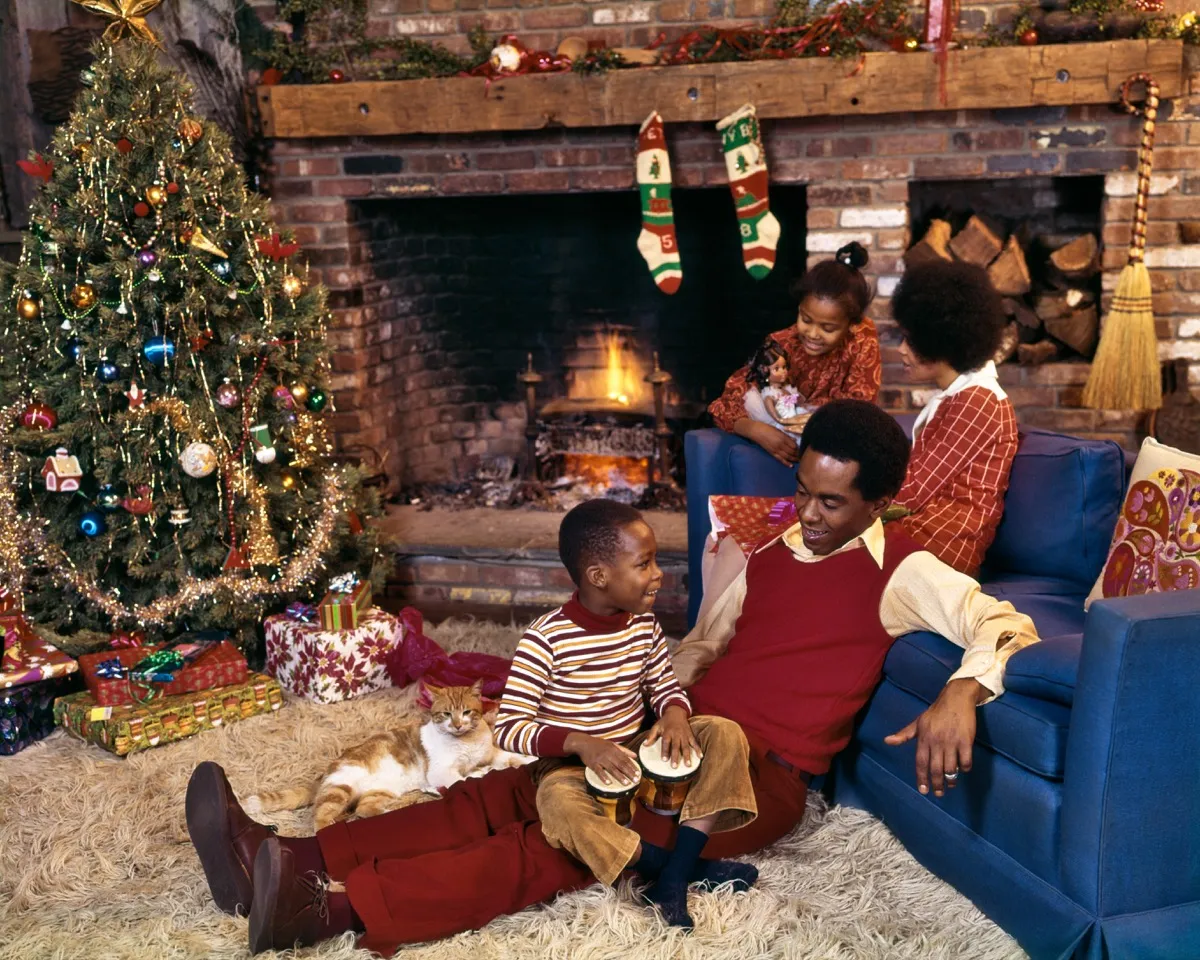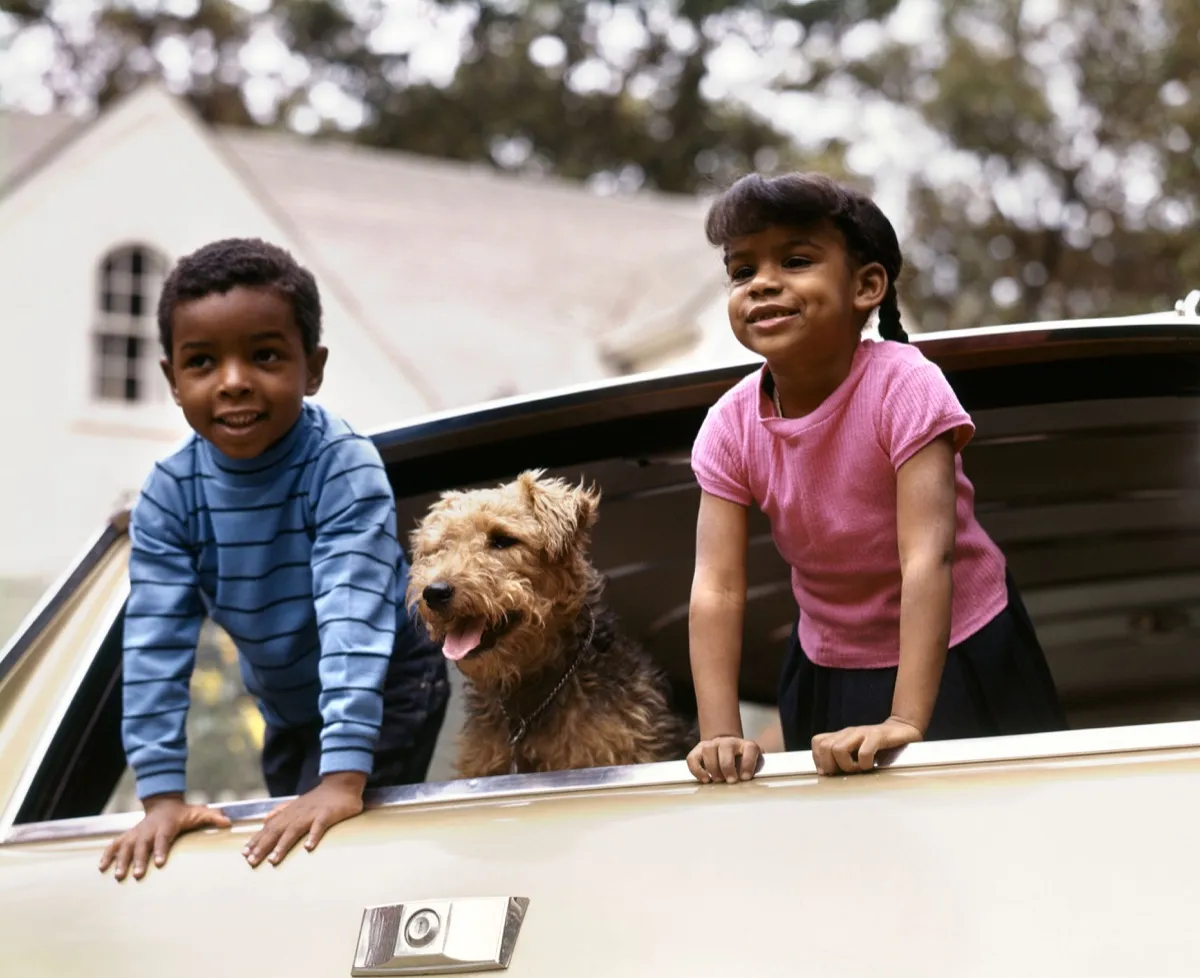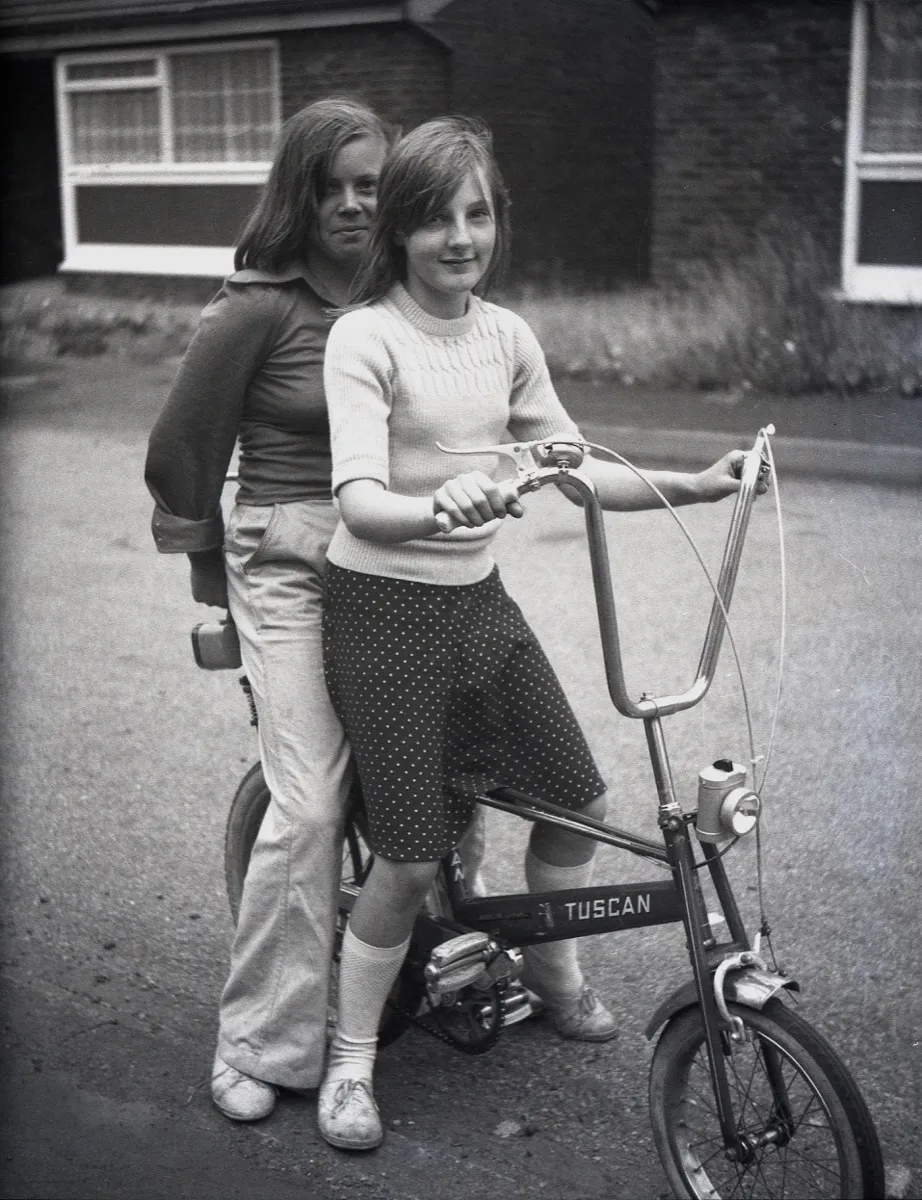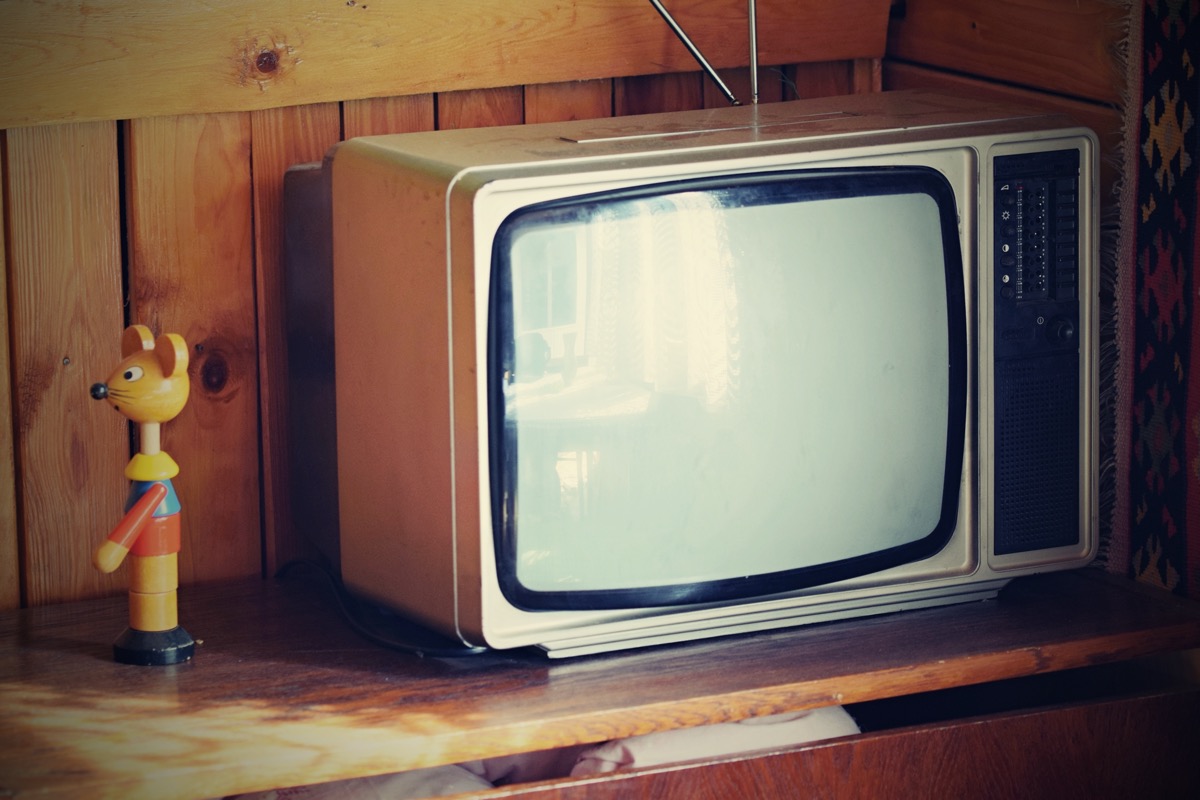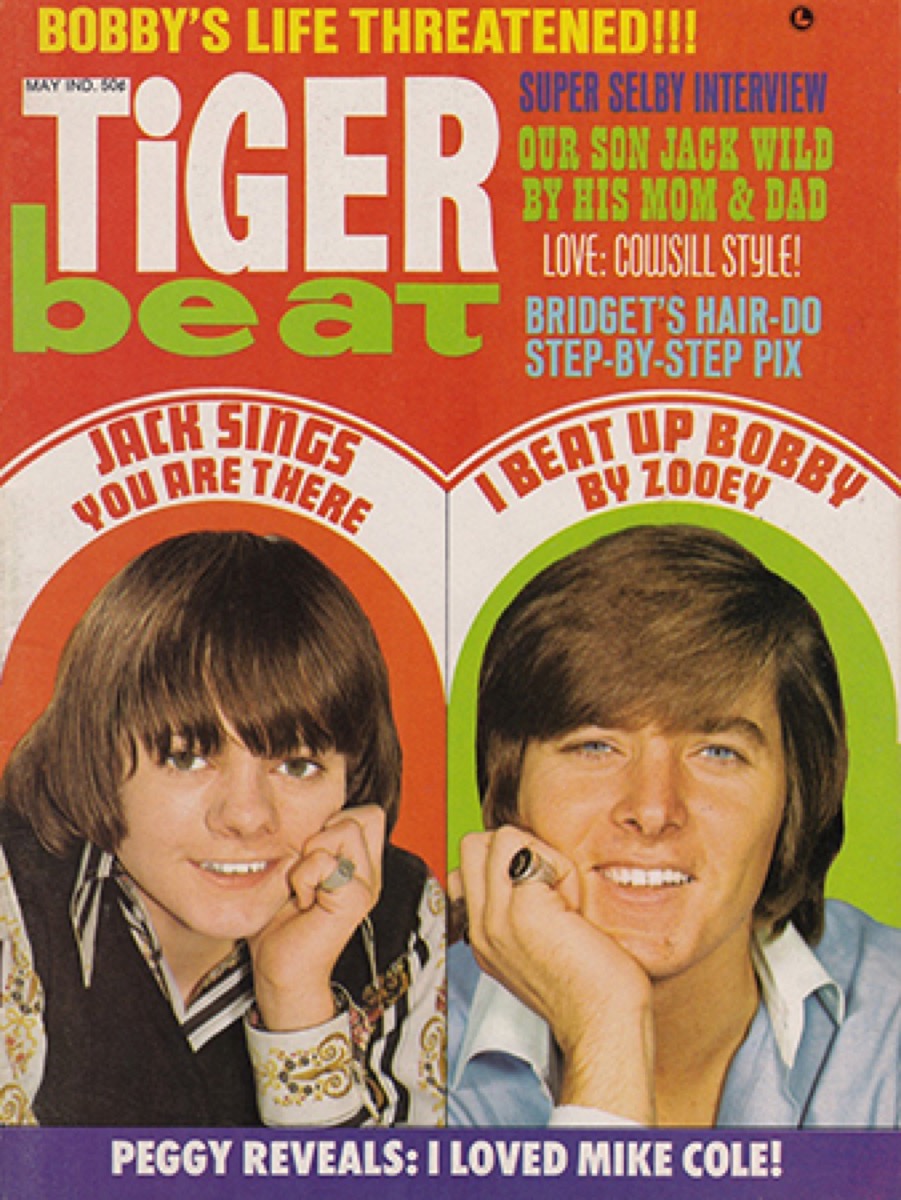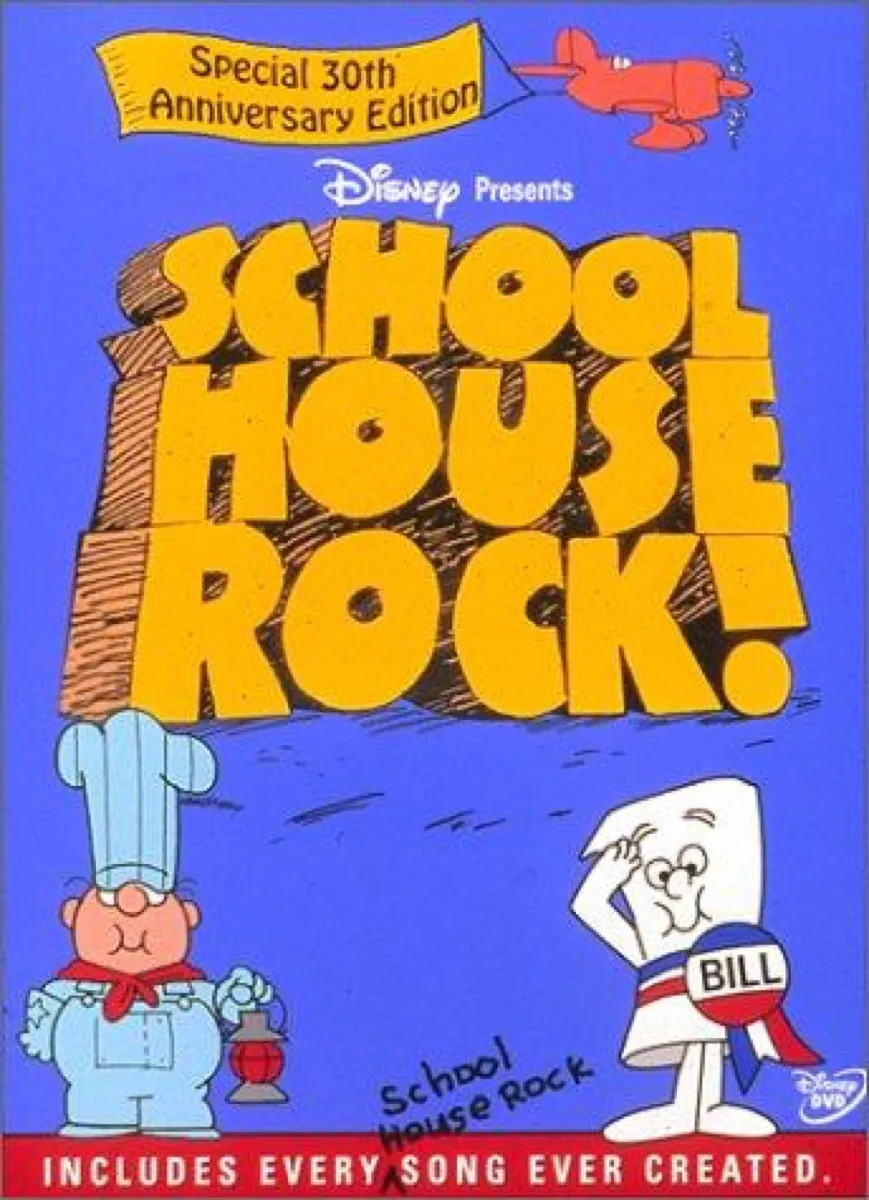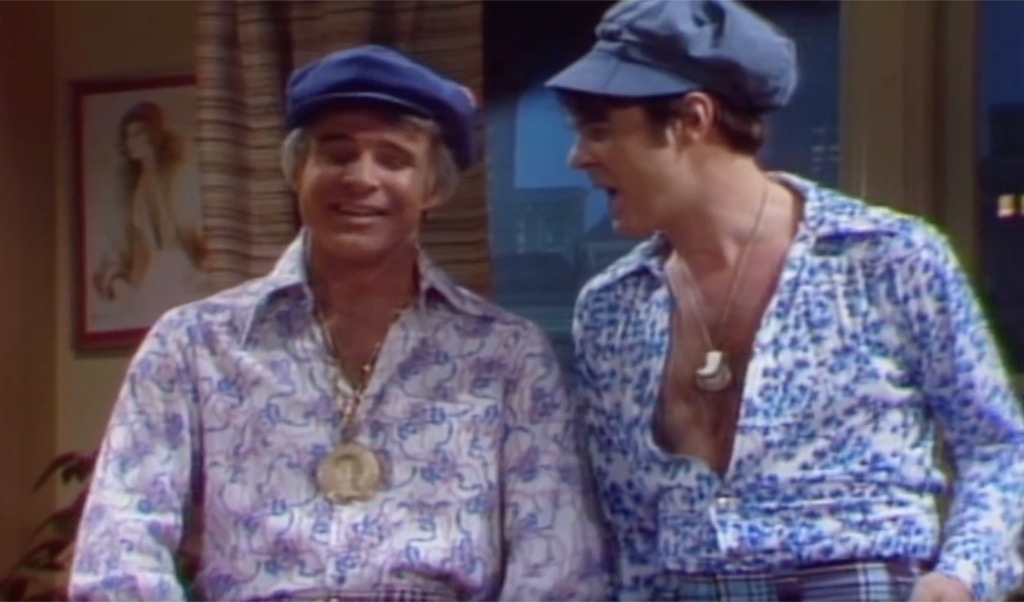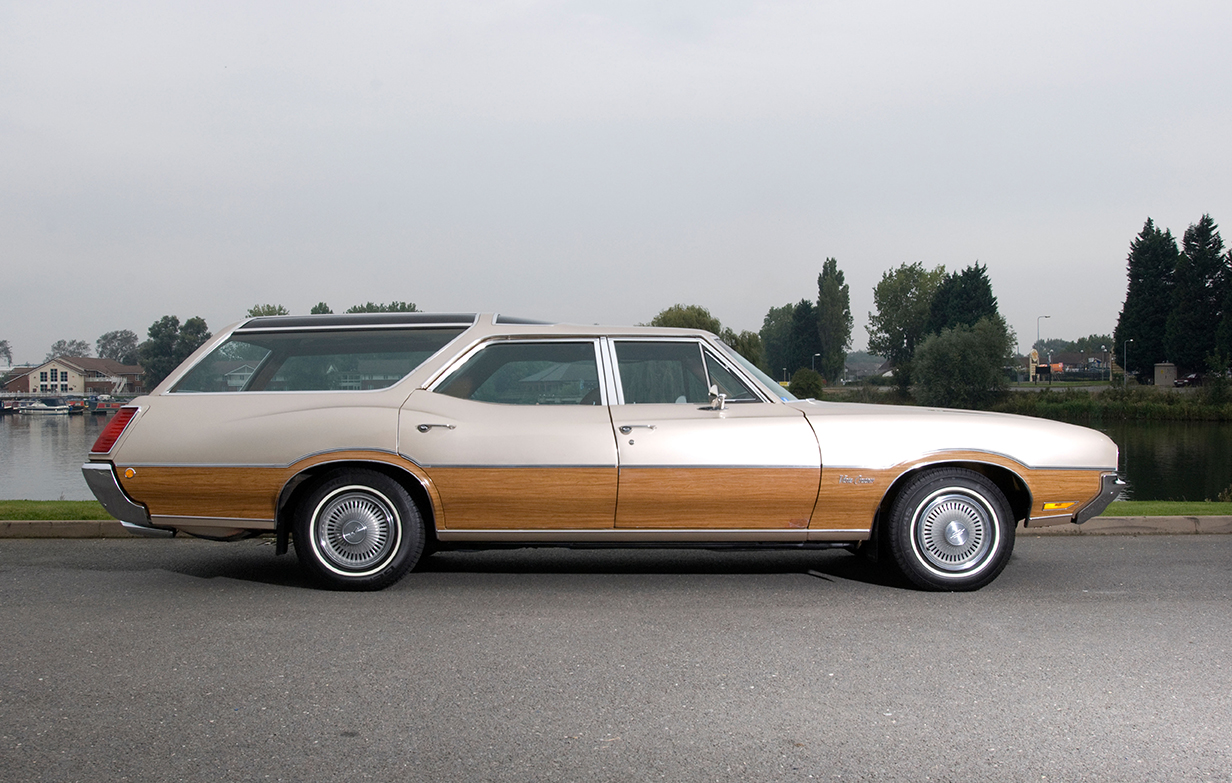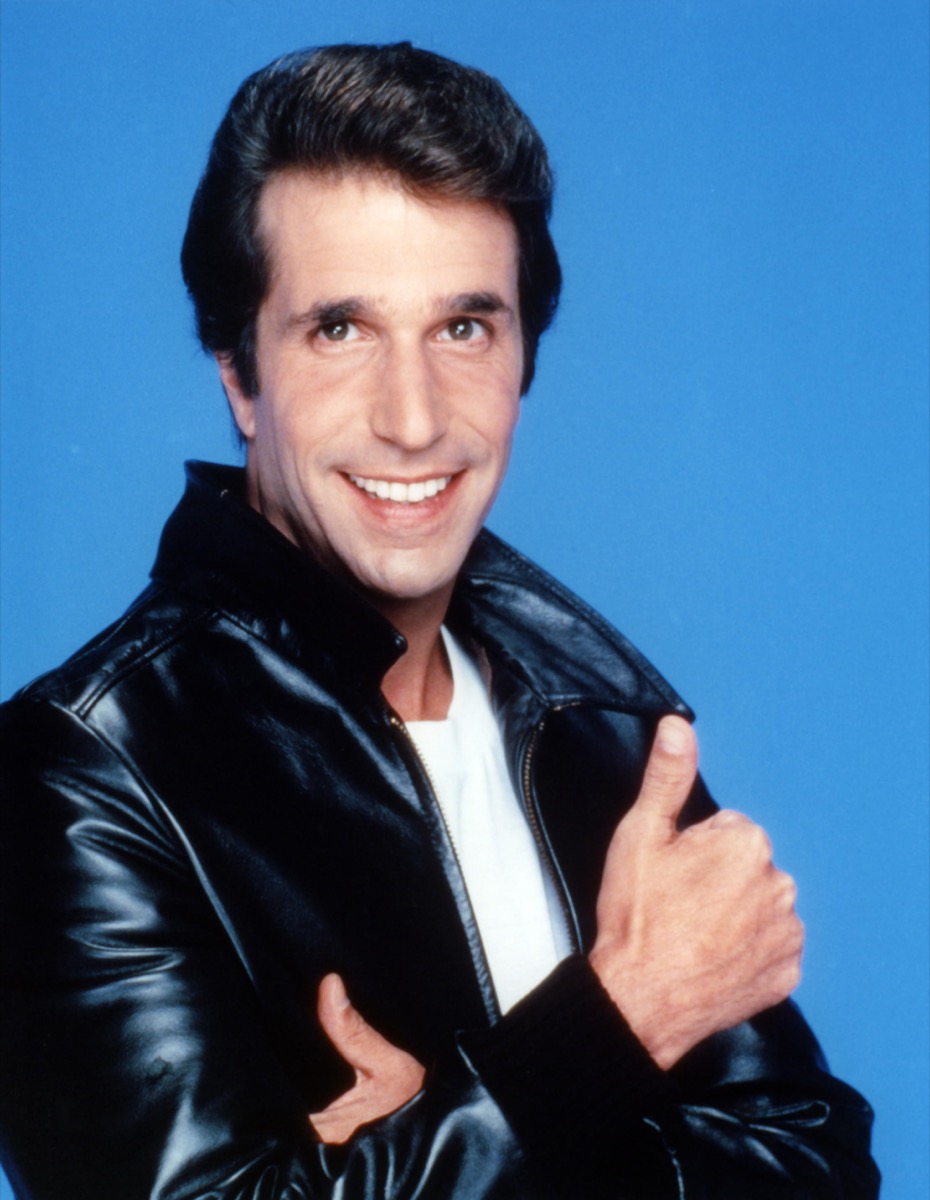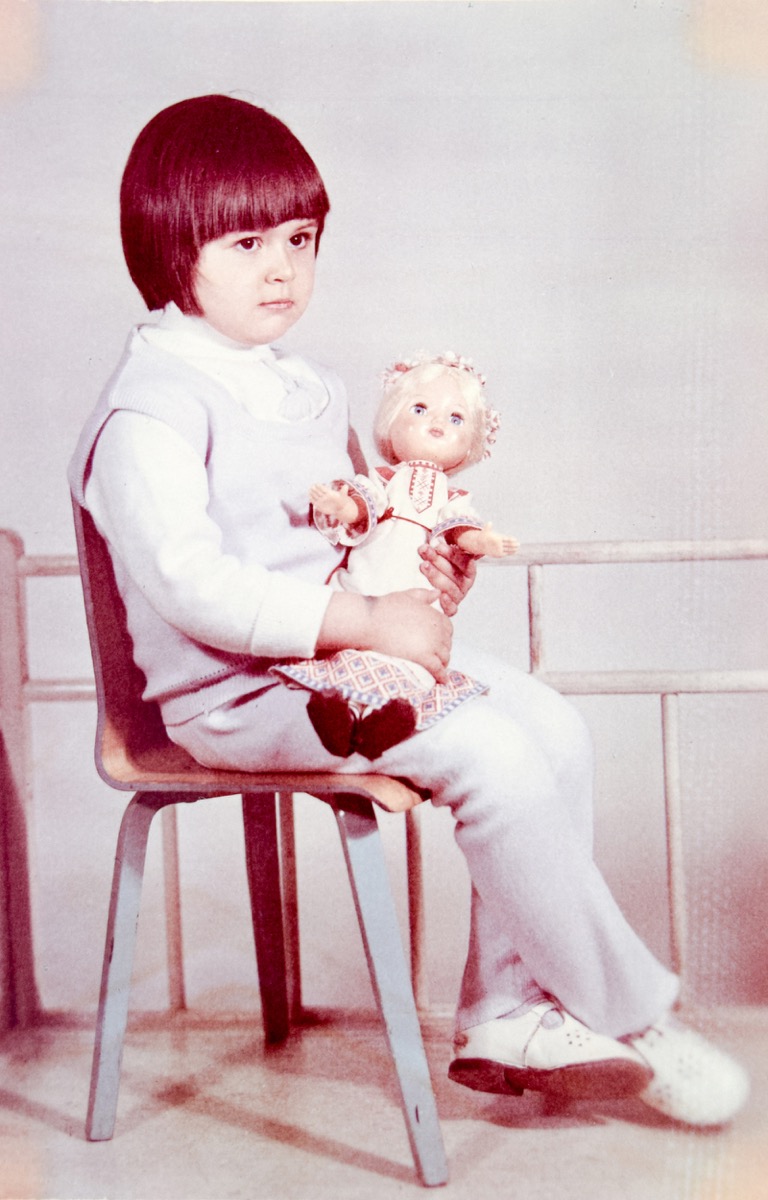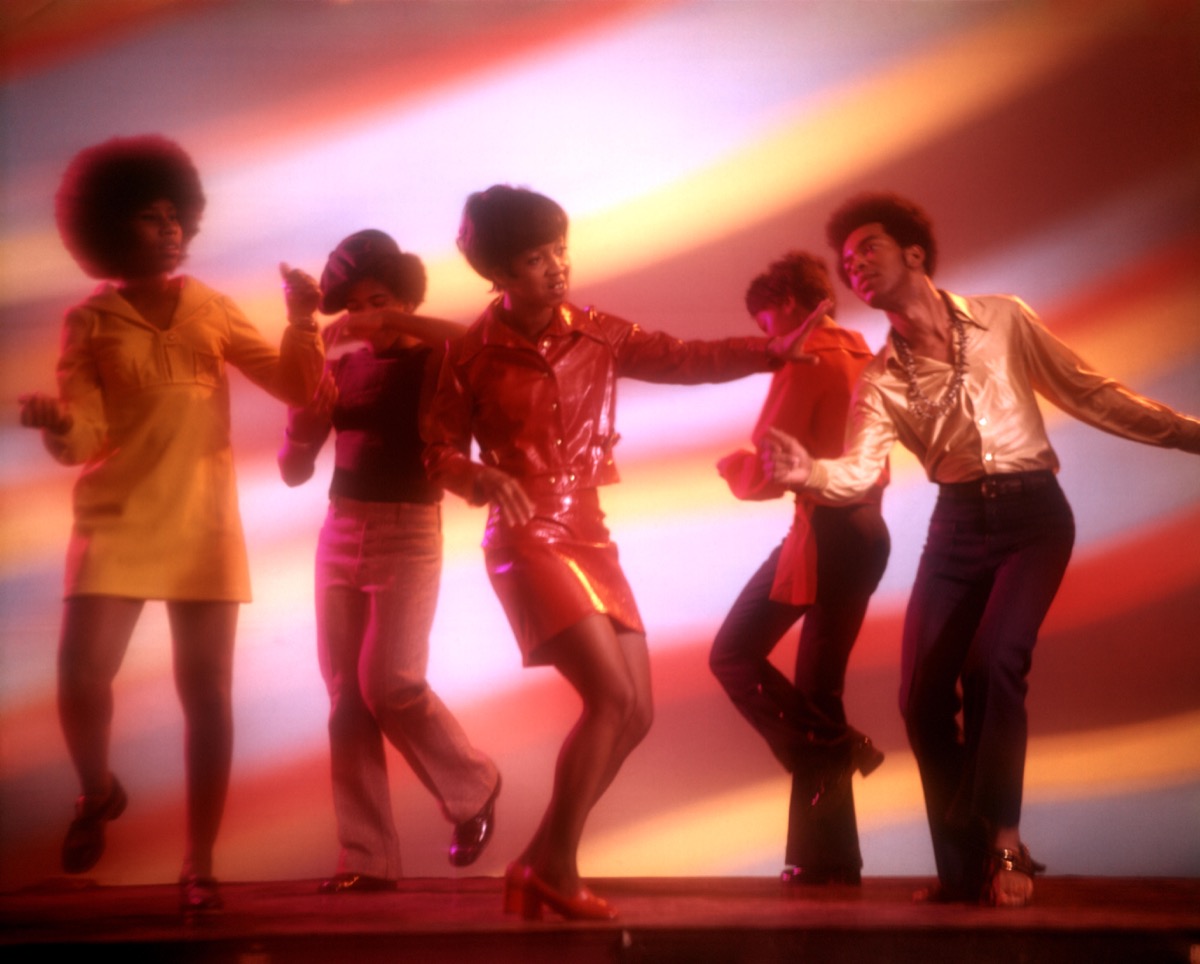They weren’t the most user-friendly audio formats, but we sure did love them. At the time, it felt like we had the best of all possible worlds. Vinyl was for home listening, cassettes were for music on the go, and 8-tracks… Well, we’re still not sure what 8-tracks were for. But there’s just something about being able to hold on to an album sleeve or flip over a cassette to get to your favorite song that made the whole music-listening experience feel more personal and special. Just look at this lunch menu from a Texas school in 1974. Their idea of healthy, brain-boosting food back then included chili burgers, hamburgers, oven fried chicken, buttered corn, and fruit gelatin. It’s a miracle we all weren’t napping through every class. But good gosh, were our taste buds happy. And for more blasts from the past, don’t miss these 20 Amazing Photos Every ’70s Kid Can Relate To. Mister Rogers’ Neighborhood wasn’t just one of our favorite shows because we had so few other options. Singing along with “Won’t You be My Neighbor?” actually made us feel comforted, even if we didn’t realize we needed comforting. Mr. Rogers’ soothing voice and gentle disposition was like a balm for the soul, giving us the confidence to face the world even when we would have rather hidden under our bed covers. Kids today would likely scoff at how we played video games in the ’70s. We actually had to pay a quarter for each game—and we don’t regret a penny of it. For one thing, it made the experience feel more precious. We didn’t just flip on a console in our home and play Pac-Man endlessly; we had to save our money, and wait for the weekend when our parents would let us walk to the arcade. “The Bump” was so simple, yet something about it felt rebellious and naughty. You essentially just bumped hips against your partner over and over and over. Crank up KC & the Sunshine Band’s “Shake Shake Shake,” and us ’70s kids could do “The Bump” all night long. (Literally, it wouldn’t be a problem: The dance really wasn’t that complicated.) If you weren’t there, it’s impossible to explain what it was like to walk into a theater having no idea how Star Wars was going to change your life. We had no preconceived notions about Han Solo or Luke Skywalker or Darth Vader, no older brothers or parents or even grandparents telling us, “This is the greatest film trilogy ever made,” or, “Oh my gosh, we’re about to get to the lightsaber battle. Wait ’til you see this!” It truly felt like ours, which is something no other generation will ever feel again. And for more great films of the past, here are 30 Movie Quotes Every ’70s Kid Knows by Heart. There was no such thing as a mobile phone in the ’70s. If you wanted to have a conversation without your mom or dad or siblings overhearing, you had to get creative. Wherever the home phone was located—for many of us, it was in the kitchen—the challenge was to see how far that cord would stretch and if there was any way of pulling it into another room with a door. If you couldn’t make it that far, you just had to be careful not to say anything you wouldn’t want your entire family to hear. The only danger in opening mail from a mysterious sender in the 1970s was the possibility of getting a chain letter. But unless you were especially superstitious, you could usually ignore those. Still, in the ’70s, we would never open a letter and find out later, “Oh no! My house is infected with a virus now!” Ah, the glory days. And for more on letters to look out for, here are 11 “Spam” Letters You Should Never Throw Away. What Farrah Fawcett poster, you ask? Okay, imagine a meme that’s so popular, everybody in the world decides that it’s the only meme that matters, and everybody wants their own copy of the meme so they can hang it on their bedroom wall, and simply displaying the meme means that you’re somehow in the know with popular culture, that your tastes are more sophisticated than other kids’ and that you understand something about the world that only adults really appreciate. That was the Farrah Fawcett poster. Steven Spielberg’s 1975 classic had almost no special effects, and we only saw the shark for a few minutes at the very end. But it had a psychological effect that made an entire generation terrified of getting into the water—we mean any body of water (including pools, freshwater lakes, and maybe even the bath). We were certain we would see a shark fin gliding towards us, and we were moments away from being devoured alive.ae0fcc31ae342fd3a1346ebb1f342fcb There’s no experience quite like letting your body sink into some shag carpeting. For a true ’70s kid, nothing makes us smile like memories of doing snow angels on a shag carpet. Whether you were a city kid or a country child, leaving the house without being constantly patrolled by a parent wasn’t a big deal in the ’70s. By today’s standards, it was an unprecedented amount of freedom, and we relished every second of it. It wasn’t just rare to see a kid in a bike helmet during the ’70s, it was unheard of. Even if you considered yourself something of a neighborhood Evel Knievel, wearing a helmet was like admitting to the other kids that you expected to crash. We probably had a few more concussions than necessary, but we didn’t know at the time just how dangerous it was to have our craniums so exposed. If you wanted to catch your favorite cartoons, there was only one time to do it: Saturday morning. We didn’t have the luxuries of kids today, with their digital streaming services that make it possible for them to watch their favorite shows at any time, 24 hours a day. And we’re happy we didn’t. Saturday morning cartoons taught us to be patient, and to be grateful for every last second of Bugs Bunny. You couldn’t have a short attention span when there were only 30 minutes of Looney Tunes every week. If you weren’t paying attention, you’d miss it all! Sure, 99.9 percent of what Tiger Beat printed about teen idols was probably written by publicists. But we didn’t care. If anything, we reveled in the myth-making, eager to think that such flawless teenage titans as Shaun and David Cassidy existed in the world. We didn’t want to be told otherwise, and we sure weren’t interested in what was going on in the adult news world. It’s not just that we adopted rocks and pretended they were actual pets, akin to a dog or cat except incapable of showing real affection. We actually paid somebody to sell us those rocks, despite the fact that rocks are pretty much available for free everywhere you go. Yes, it was ridiculous, but it was a fun and harmless diversion. The brilliance of Schoolhouse Rock is that it taught us timeless lessons about grammar, math, politics, and science without any of us realizing that we were learning. The cartoons were funny and the songs were catchy—we can still sing the whole “Conjunction Junction, What’s Your Function” song without missing a beat—and, when it was all over, our heads were filled with facts and useful information that we probably would have ignored if it came from an actual school teacher. Saturday Night Live is now an institution (and one that you don’t actually have to stay up late on Saturday to watch anymore). But, in the late ’70s, it was still mostly mysterious, at least to kids who only heard whispered rumors about the show from our older brothers and sisters. Getting to see even five minutes of SNL felt like we had gotten away with something. Yes, we know that people still take road trips. But they’re nothing like the road trips of the ’70s. We had no GPS, and no digital distractions of any kind, for that matter. We lived in a world without smartphones or iPods or tablets or portable DVD players. We had to make up our own car games to keep the malaise from setting in, or stare out at the scenery whizzing past until we reached a road trip trance state. Nobody does meditation like a bored kid on an eight-hour road trip. Kids have always been mean to each other, but at least in the ’70s, if you wanted to be a jerk, you had to make an effort. You couldn’t do it anonymously, on a computer screen, without any consequences. You had to walk up to someone and be cruel right to their face. Their words could still hurt, but at least you were never bullied on a global forum in front of millions of strangers. You could make an argument that mood rings didn’t actually work as promised, and were about as effective in diagnosing your mood as a horoscope is in predicting your day. But in the 1970s, it felt like mood rings were some sort of black magic that could see into our souls and announce to the world, “Not today, people. Not today.” Imagine living in a world where Sesame Street was still in its prime—Muppets like Grover and Ernie and Bert were doing arguably their best work ever—and, on top of that, The Muppet Show was making new episodes every week. Kermit wasn’t just a nostalgic throwback to yesterday—he was a bona fide celebrity, a Burt Reynolds for the under-15 set. In the ’70s, we tuned in to every episode of both shows with hive-mind-like anticipation. Seriously, nobody. Can you imagine a character as innocent as the Fonz being idolized in a cynical modern world? He was a middle-aged single man in a leather jacket who constantly gave a thumbs up and said, “Aaaaaaaay.” He would have been laughed off the planet. But in the ’70s, we worshipped him, and we regret none of it. And for some fun lingo from the best decade ever, here are 20 Slang Terms From the 1970s No One Uses Anymore. In the ’70s, every kid seemingly looked at Adam Rich on the TV show Eight Is Enough and then told their parents, “I want to look like that!” Wealthy or poor, it didn’t matter—we all got haircuts that made it look like our mom had put a salad bowl over our head and cut around the bottom with scissors. We can’t look at those old photos of ourselves in the 1970s without wincing, but we secretly love those crazy clothes. At least we all looked collectively silly in our wide-collar shirts and bellbottoms! And for more snazzy styles from the era, here are 25 Things Cool People Wore in the 1970s.
